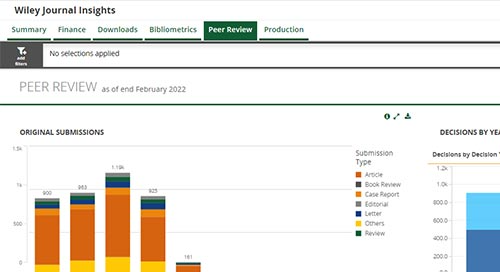the-plan-s-rights-retention-strategy-how-should-we-respond
September 12, 2022
By now you have likely heard the term Rights Retention in some context. It can be tricky to get to grips with OA policies and they come with their own challenges, which need careful consideration. So, what is Rights Retention, what are the challenges and what are we doing to support researchers?
What is Rights Retention?
Rights Retention is a mechanism whereby an author retains sufficient intellectual property rights, in order to comply with their funder or institutional open access requirements. Some forms of Rights Retention require authors to inform publishers that the author accepted manuscript (AAM) will be immediately available under a Creative Commons Attribution (CC BY) license in an institutional or subject repository.
What are the challenges surrounding Rights Retention?
Over the past ten years, we have made huge progress on our journey to enable as many authors as possible to publish their research via open access. It is crucial that we prioritize sustainable routes to OA, to ensure your journal can thrive and serve your communities in the best way possible. Policies that focus on zero embargo green OA (depositing the AAM or final version of record in a repository), such as Rights Retention may slow or even halt the progress we have made in the transition to OA and start increasing the amount of paywalled content that we publish. All of our open access strategies are designed to future-proof journals, so they succeed in an OA world. Implementing policies that could halt or slow a journal’s OA growth would have an impact on its ability to succeed and hamper our goals to embrace a more open publishing landscape.
There is still a lot we don’t know about green OA. There is uncertainty around the impact of research that is made open access via the green route; will it have the same reach as an open access article on a publisher platform, will it appear at the top of the listings in a search engine, will it be linked to other outputs such as data and code, will it be updated if an error is found? Publishers proactively maintain the Version of Record (VOR), with the responsibility to ensure that any corrections or retractions are applied in a timely, consistent, and transparent way. It is also where ethics declarations, data availability, funder recognition and documentation of contributor roles are captured. A lot of work goes into making sure the VOR is discoverable. In 2021 there were more than 69 million article downloads each month from Wiley Online Library. Metadata including references goes to repositories including PubMed, Web of Science, Clarivate, and CrossRef so that the Version of Record is maintained and preserved for present and future researchers. Articles that are deposited in a repository under zero-embargo may not be as discoverable or impactful as those published open access on a publisher platform.
What are we doing to support researchers?
Our priority is to be as transparent as possible with your authors so that they understand their options when publishing with your journal. That is why we are making efforts to update submission sites, to provide clarity around our policies.We are also working with our society partners and editors so that we can better support authors at every step of their publication journey. By constantly evolving and adapting our workflows and processes, we can ensure we provide the best experience for researchers who choose to publish with your journal.
Thanks to our growing number of transformational agreements, authors across the world can increasingly publish in the journal of their choosing, while still complying with open access policies. These agreements span Europe, the Americas, Asia Pacific and Africa. We have over 450 fully open access journals and over 1600 journals that offer an open access publishing option, and with our flips program, we’re supporting partners to transition more and more journals into full OA journals. We offer a range of creative commons licenses that allow authors to retain copyright and comply with open access policies. The administrative burden is taken away from the author when publishing via gold OA and article publication charges are paid directly by the institution. This is now a well-established route to open access and it works.
We are also working with organizations such as Research4Life to offer waivers and discounts on article publication charges for researchers in lower-income countries. This is part of our commitment to find more sustainable solutions to make open access more equitable and an option for all.
Want to understand more about open access policies? This quick video gives you the facts you need to know.













